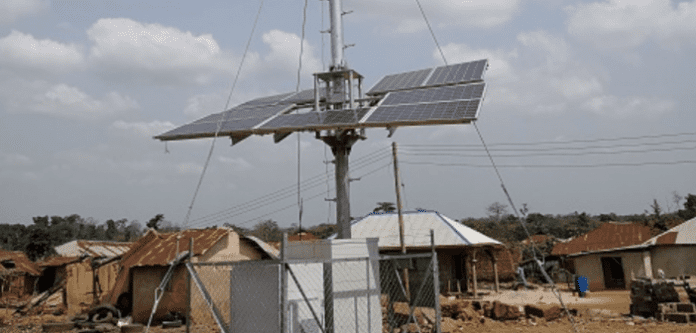MTN Nigeria works with Huawei to reduce infrastructure TCO
While its growth trajectory in the U.S. rural carrier market is currently up in the air, Huawei continues to enable rural connectivity in underserved geographies around the world. The infrastructure giant recently using low-band LTE non-line-of-sight relay technology to reduce the deployment costs for carrier MTN in Nigeria.
Huawei’s RuralStar 2.0 system runs fully off of solar power, and relies on 12-meter-tall poles rather than much larger–and more expensive–macro sites. According to Huawei, this approach to rural coverage reduces construction costs by 70%. The relay technology can connect sites up to a distance of 40 kilometers. Huawei projects MTN Nigeria will see a return on investment in a three-year period.
“Everyone has the right to access the internet,” Cao Ming, vice president of Huawei Wireless Network Product Line, said in a statement. “We are glad to see RuralStar improves villagers’ living standard. RuralStar aims to create a healthy business ecosystem and connect the unconnected in emerging markets. Huawei will work with the industry to eliminate the digital divide in emerging markets so that more people can enjoy the convenience brought by wireless communications and mobile internet.”
During the recent Mobile World Congress event in Barcelona, Spain, RuralStar won the GSMA’s “Best Mobile Innovation for Emerging Markets” award. The industry trade group estimates there are 1.5 billion people in the world that can’t access the internet. In addition to the work with MTN Nigeria, RuralStar has been deployed by 12 operators in eight countries, including Thailand, Ghana, Indonesia and Mexico.
While Huawei’s carrier business is passing its rivals in both rural and developed markets around the world, U.S. carrier business remains a pain point. Tier 1 carriers, facing politically pressure from national security hawks, not only don’t use Huawei network gear, but Verizon and AT&T even went so far as to scrap agreements to resell Huawei smartphones.
Huawei does work with more than 20 Tier 3 U.S. operators, but now that business line is being scrutinized by lawmakers. Late last month, FCC Chairman Ajit Pai, confirming an earlier report, said, “Threats to national security posed by certain communications equipment providers are a matter of bipartisan concern. Hidden ‘back doors’ to our networks in routers, switches—and virtually any other type of telecommunications equipment—can provide an avenue for hostile governments to inject viruses, launch denial-of-service attacks, steal data, and more. Although the FCC alone can’t safeguard the integrity of our communications supply chain, we must and will play our part in a government- and industry-wide effort to protect the security of our networks.”
That position has manifested as a proposed rule change that could cut off Universal Service Fund (USF) dollars, used to incentivize and subsidize rural broadband deployments, to small and rural carriers that use network infrastructure gear provided by Huawei and compatriot infrastructure vendor ZTE.

